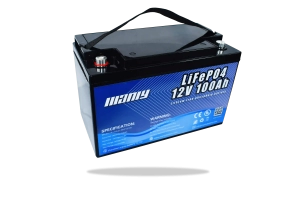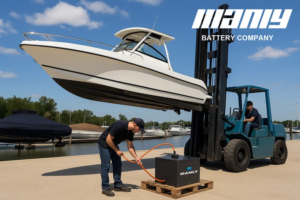2024 How Much Do Golf Cart Batteries Cost
Table of Contents
- 2024 How Much Do Golf Cart Batteries Cost
- What Type of Battery Is in a Golf Cart?
- How Long Do Golf Cart Batteries Last?
- Cost of Golf Cart Battery for Different Golf Cart Battery Types
- Additional Factors to Consider Before Buying a Golf Cart Battery
- Choosing Between Lead Acid and Lithium Golf Cart Batteries
- Is It Necessary to Replace All Golf Cart Batteries Simultaneously?
- Where to Buy High-Quality Golf Cart Batteries
- Conclusion
- Learn More About Battery

What Type of Battery Is in a Golf Cart?
When it comes to choosing the right battery for your golf cart, there are three main types available: lead acid batteries, AGM batteries, and lithium golf cart batteries. Each of these battery types has its own set of advantages and disadvantages, which impact their cost, performance, and maintenance requirements. Below, we’ll dive into each type to help you understand the differences and find the best option for your needs.1. Lead Acid Batteries
Lead acid golf cart batteries are the most common type used in electric golf carts today. These batteries have been around for decades and are known for their affordability and widespread availability. Manufacturers like Trojan Battery Company, US Batteries, and Crown Battery produce a variety of 6V, 8V, and 12V lead-acid batteries, which are used in 36V, 48V, and even 72V golf cart systems.One of the primary reasons lead acid golf cart batteries remain popular is their lower cost compared to other options. For example, a standard 48V golf cart often comes with lead acid batteries because they are less expensive to manufacture and replace. Another advantage is that these batteries are easy to find at nearly any golf cart dealer or large retail store. If you need a replacement, you can either install it yourself or have a technician do it for you.However, lead acid batteries come with some drawbacks. They require regular maintenance to function properly, including cleaning the battery terminals and ensuring that the water levels remain at the recommended levels. If you neglect these maintenance tasks, it can shorten the battery’s lifespan, cause rust in the battery compartment, or lead to costly repairs. Generally, lead-acid batteries have a shorter lifespan, lasting up to 500 cycles with proper care. Additionally, these batteries are the heaviest option, which can affect the overall weight and performance of your golf cart.While lead acid golf cart batteries may need more upkeep, they are also one of the most recyclable types of batteries. About 80% of the components in a lead-acid battery can be reused to create new batteries, making them an environmentally friendly option when disposed of properly.2. AGM Batteries
AGM, or Absorbent Glass Mat, batteries are an improved version of lead-acid batteries and have gained popularity as a maintenance-free alternative. Like standard lead-acid batteries, AGM golf cart batteries use lead plates and an electrolyte solution. However, the electrolyte in AGM batteries is absorbed in a fiberglass mat, which prevents it from spilling. This design makes AGM batteries safer and less prone to issues like acid leakage and terminal corrosion.One of the biggest benefits of AGM golf cart batteries is that they don’t require regular maintenance, such as adding water to the cells or cleaning acid deposits. This makes them a convenient option for people who want a low-maintenance solution. They are also more resistant to vibration, which can help extend their lifespan. While AGM batteries are more expensive than traditional lead-acid batteries, they can last longer—often providing double the lifespan of standard flooded batteries.Golf cart manufacturers such as Yamaha often offer AGM batteries as a standard or optional upgrade because of these advantages. Additionally, AGM batteries can handle colder temperatures better than standard lead-acid batteries, making them a good option for those who use their golf carts in varying climates. Leading manufacturers of AGM golf cart batteries include Trojan, US Battery, and Leoch Battery, and they are available in the same 6V, 8V, and 12V formats as lead-acid batteries.Although AGM batteries are less prone to damage from neglect, they are not immune to sulfation—a condition where lead sulfate crystals build up on the plates over time, reducing the battery’s performance. This makes it essential to use a charger specifically designed for AGM batteries to prevent this issue.3. Lithium Batteries
Golf cart lithium batteries have quickly become the preferred option for many golf cart owners due to their numerous benefits over traditional lead-acid and AGM batteries. While they tend to be the most expensive option, their long lifespan and superior performance make them worth considering. Lithium batteries can last up to three times longer than standard lead-acid batteries and require zero maintenance. You won’t have to worry about adding water, cleaning corrosion, or tightening terminals—all you need to do is charge them up.One of the most significant advantages of golf cart lithium batteries is their weight. Lithium batteries are much lighter than lead-acid or AGM batteries, which reduces the overall weight of your golf cart. A lighter cart can move faster, climb hills more easily, and improve handling. Because of this, many golf cart manufacturers such as EZ-GO and Club Car are now offering lithium batteries as an option in their newest models.In addition to being lighter, lithium batteries offer faster charging times. In many cases, a lithium battery can charge twice as fast as a lead-acid battery, and some models can reach 80% capacity in just an hour. This can save you a lot of time if you frequently use your cart and don’t want to wait for a full 8-hour charge with a standard lead-acid battery.Lithium batteries also come with advanced features such as built-in Battery Management Systems (BMS). A BMS monitors the health of each cell in the battery, ensuring safe operation and preventing problems such as overheating and overcharging. Some lithium battery brands, like Dakota Lithium and Relion Battery, even offer smartphone apps to keep track of your battery’s health and performance in real-time.While golf cart lithium batteries have a higher upfront cost, they offer the best value over time due to their longer lifespan, lower maintenance needs, and improved performance. Additionally, the technology behind lithium batteries continues to advance, making them more affordable than they were just a few years ago. This trend is expected to continue as more golf cart owners make the switch from lead-acid to lithium power.How Long Do Golf Cart Batteries Last?
The lifespan of golf cart batteries varies greatly depending on the type of battery, maintenance practices, and usage patterns. Understanding how long your batteries should last is essential to getting the most out of your investment and keeping your golf cart running smoothly. On average, the golf cart battery lifespan ranges from 4 to 10 years, but it’s crucial to consider the specific type of battery to get a more accurate estimate. Let’s explore how long each battery type typically lasts and what factors impact golf cart battery life expectancy.1. Lead Acid Golf Cart Battery Lifespan
Lead acid golf cart batteries are the most common type found in golf carts, especially older models. These batteries typically have the shortest lifespan of all the options, ranging from 4 to 6 years if properly maintained. Regular maintenance is crucial for extending the golf cart battery lifespan. This includes keeping the water levels in the battery cells at the recommended levels, cleaning the terminals, and ensuring the battery is fully charged whenever the cart is not in use.If these maintenance tasks are neglected, the golf cart battery life can be significantly shortened. For instance, letting the water levels drop too low or failing to charge the battery fully can cause permanent damage to the cells, reducing the battery’s overall capacity. On average, lead acid golf cart batteries can handle between 500 to 1,000 cycles before they need replacement. A cycle is defined as a full discharge and recharge, so the more frequently you use your cart and drain the battery, the faster it will wear out.Because lead acid golf cart batteries are widely available and relatively affordable, they are a popular choice for many golf cart owners. However, their short lifespan means they may not be the best option if you want a long-lasting, low-maintenance solution.2. AGM Golf Cart Battery Lifespan
AGM (Absorbent Glass Mat) batteries are an upgraded version of traditional lead-acid batteries. They are designed to last longer and require less maintenance, making them a convenient choice for those who want to reduce upkeep without sacrificing performance. The average lifespan of golf cart batteries that use AGM technology is about 6 to 7 years. While they don’t require regular watering like flooded lead-acid batteries, it’s still important to use the right type of charger to prevent overcharging, which can shorten the battery’s life.One reason AGM golf cart batteries have a longer lifespan is due to their lower self-discharge rate. This means they hold their charge better during periods of inactivity, which is ideal for golf carts that are only used seasonally. However, similar to standard lead-acid batteries, AGM batteries also have a limited number of charge cycles—usually around 1,000 cycles.AGM batteries are also more resistant to vibration and damage, making them suitable for rougher terrains and more demanding applications. While they have a longer lifespan than standard lead-acid batteries, their cost is also higher. For those looking for a middle ground between affordability and longevity, AGM golf cart batteries can be a good option.3. Lithium Golf Cart Battery Lifespan
Lithium golf cart batteries are considered the gold standard when it comes to golf cart battery life expectancy. These batteries typically last much longer than their lead-acid counterparts, with a lifespan of up to 10 years or more. The main advantage of lithium golf cart battery life is that they can handle between 2,000 to 5,000 charge cycles, significantly outlasting both lead-acid and AGM batteries.Because lithium batteries don’t require any maintenance—no need to check water levels or clean terminals—they are ideal for golf cart owners who want a hassle-free solution. Another benefit is that lithium batteries have a very low self-discharge rate, so they retain their charge even if the cart is left unused for extended periods.In addition to their long lifespan, lithium golf cart battery life offers other advantages, such as faster charging times and consistent power output throughout the entire discharge cycle. This means your golf cart won’t slow down as the battery drains, providing a better driving experience overall. While the upfront cost of lithium batteries is higher, the long-term savings in maintenance and replacement costs make them a more economical choice over time.4. Factors That Impact Golf Cart Battery Life
The average lifespan of golf cart batteries can be influenced by several factors, including:- Type of Battery: As discussed, the type of battery you choose has a major impact on how long it will last. Lead-acid batteries have the shortest lifespan, followed by AGM batteries, and then lithium batteries with the longest lifespan.
- Maintenance: Proper maintenance is key to extending the golf cart battery lifespan. For lead-acid batteries, this means regularly checking the water levels, cleaning corrosion from the terminals, and using the right charger. AGM batteries need less maintenance, but it’s still important to avoid overcharging. Lithium batteries, on the other hand, are virtually maintenance-free.
- Usage Patterns: How often and how far you drive your golf cart can also affect golf cart battery life. More frequent use, deeper discharges, and high-speed driving can all shorten the battery’s lifespan.
- Storage Conditions: Storing your golf cart in extreme temperatures can negatively impact the golf cart battery life expectancy. High heat can cause the internal components to break down faster, while freezing temperatures can reduce the battery’s ability to hold a charge.
- Charging Practices: Using the correct charger and avoiding overcharging are crucial for all types of batteries. Lead-acid and AGM batteries can suffer from sulfation if left in a discharged state for too long, while lithium batteries can be damaged by overcharging without a Battery Management System (BMS).
Cost of Golf Cart Battery for Different Golf Cart Battery Types
When considering a replacement or upgrade for your golf cart battery, it's important to understand the costs associated with each battery type. The golf cart battery price can vary greatly depending on the type of battery, capacity, and brand. In this section, we’ll break down the cost of golf cart batteries for 6 volt,8 volt 12 volt for lead-acid, AGM, and lithium batteries. This information will help you choose the best option based on your budget and performance needs.1. Cost of Lead Acid Golf Cart Battery
Lead acid golf cart batteries are the most affordable option for powering a golf cart. Because of their lower cost, they are a popular choice for budget-conscious buyers. However, the total cost of a golf cart using lead-acid batteries can vary depending on the voltage and number of batteries required.- Cost of 6 Volt Golf Cart Batteries: A typical 6V lead-acid battery costs around $250 per battery. If your golf cart uses eight 6V batteries (common for 48V golf carts), the total replacement cost would be around $1500. This setup is often found in older golf carts and is ideal for those looking for a basic, cost-effective solution.
- Cost of 8 Volt Golf Cart Batteries: An 8V lead-acid battery costs slightly more, averaging around $270 per unit. With a setup of six 8V batteries, the total cost would be around $1620. This configuration is also commonly used in 48V golf carts and provides a good balance between cost and performance.
- Cost of 12 Volt Golf Cart Batteries: The 12V lead-acid batteries are the most expensive option within this category, with an average price of $400 per battery. A standard setup of four 12V batteries would cost approximately $1600. This setup is often used in 48V systems and offers higher power output but comes at a higher cost.
2. Cost of AGM Golf Cart Battery
AGM golf cart batteries are a step up from traditional lead-acid batteries. They offer several benefits, such as being maintenance-free, having a lower self-discharge rate, and being more resistant to vibration. However, these advantages come at a higher price point.- Cost of 6 Volt Golf Cart Batteries (AGM): A 6V AGM battery costs around $360 per battery. If you have a typical setup requiring eight 6V batteries, the total replacement cost would be around $2880. For example, the Trojan 6V AGM golf cart battery, such as the Trojan T-605 model, is priced at around $359.
- Cost of 8 Volt Golf Cart Batteries (AGM): An 8V AGM battery is priced at approximately $460 per unit. A set of six 8V AGM batteries would cost around $2760. Although this is a more expensive option compared to lead-acid, it offers better durability and a longer golf cart battery life expectancy.
- Cost of 12 Volt Golf Cart Batteries (AGM): The 12V AGM battery costs about $540 per battery, making it the priciest among AGM options. For a four-battery configuration, the total cost would be $2160. Despite the higher golf cart battery price, AGM batteries require little to no maintenance, making them an appealing option for those seeking convenience.
3. Cost of Lithium Golf Cart Batteries
Lithium batteries are the most expensive option, but they provide the best value over time due to their longer lifespan, higher efficiency, and maintenance-free nature. As technology improves, the lithium 48V golf cart battery price has become more competitive, making it a popular choice for those looking to upgrade their golf cart’s performance.- Lithium 48V Golf Cart Battery Price: A standard 48V lithium battery with 105Ah capacity costs around $2500. A larger 48V 160Ah lithium battery is priced at about $3500, while the highest capacity option—48V 210Ah—costs approximately $5200. These prices reflect those found on major online marketplaces like Amazon and Walmart. However, purchasing directly from a battery manufacturer like MANLY Battery can significantly reduce the cost. For example, the MANLY Battery 48V 105Ah lithium battery is priced at around $950, and the 48V 160Ah battery is priced at approximately $1600. Please note that these are per-unit prices excluding shipping costs. If you’re looking to buy in bulk (200 units or more), there are attractive discounts available to make the deal even sweeter.
| 48v Lithium Golf Cart Battery Cost | |||
| Brands | Ampere-hour | Price per unit | Quality |
| MANLY Battery | 105 | $1,900 | Get high-quality Grade A battery cells through direct purchase from the manufacturer. |
| Dakota Lithium | 96 | $2,300 | |
| Trojan | 105 | $2,400 | |
| ECO Battery | 105 | $2,600 | |
| Epoch Batteries | 100 | $2,100 | |
| ALLIED BATTERY | 105 | $2,400 | |
4. Which Battery Type Offers the Best Value?
When comparing the cost of a golf cart battery setup, it’s important to consider not just the initial purchase price but also the long-term costs and benefits. Lead-acid batteries are the most affordable option upfront, but they require regular maintenance and need to be replaced more frequently. AGM batteries are a good middle-ground choice, offering longer life and lower maintenance at a higher initial price.On the other hand, lithium batteries offer the longest lifespan, require no maintenance, and provide the best performance. While the initial golf cart battery price is the highest, the long-term savings in replacement and maintenance costs make them a smart investment for serious golf cart owners.Choosing the right battery for your golf cart depends on your budget, usage needs, and willingness to perform regular maintenance. Whether you choose lead acid batteries, AGM batteries, or lithium golf cart batteries, knowing the 6v, 8v, 12v, 36v 48v golf cart batteries cost will help you make an informed decision.Additional Factors to Consider Before Buying a Golf Cart Battery
When selecting the best golf cart battery for your vehicle, it's important to look beyond just the upfront cost. There are several other factors that can significantly affect your long-term satisfaction and overall expenses. Two of the most important considerations are installation costs and golf cart battery maintenance. Proper planning for these aspects can help you avoid unexpected expenses and extend the lifespan of your investment.1. Installation Costs
The price of a golf cart battery often does not include the installation costs, which can add up depending on where you purchase the battery and who installs it. If you choose to install the battery yourself, you might be able to save on this cost, but professional installation is recommended if you’re not experienced with golf cart maintenance. The golf cart battery installation process involves safely removing the old batteries, correctly connecting the new ones, and ensuring that all components are functioning properly. Improper installation can lead to damage or reduced battery life.For lead-acid batteries, there’s also the consideration of handling heavier weights, as these batteries are significantly heavier than their lithium counterparts. This weight difference means that installing golf cart batteries like lead-acid options can be more physically demanding, and you may need special tools or a helping hand to get the job done correctly. If you opt for professional golf cart battery installation, you can expect to pay anywhere from $100 to $300 depending on your location and the complexity of the setup.2. Maintenance Requirements and Warranty
Understanding golf cart battery maintenance is crucial, especially if you’re considering lead-acid or AGM batteries. Lead-acid batteries, the most traditional choice, require regular upkeep, including checking water levels, cleaning the terminals, and using the right type of charger to prevent sulfation. Skipping these maintenance tasks can lead to premature battery failure and costly replacements. On average, lead-acid batteries require weekly or bi-weekly maintenance to stay in optimal condition.AGM batteries, while still a type of lead-acid battery, are maintenance-free and don’t require watering, which makes them a more convenient option. However, it’s still important to use the correct charger to avoid overcharging. Although golf cart battery maintenance is minimized with AGM batteries, the cost of AGM batteries is higher, making them a more premium choice for those looking to reduce upkeep.For lithium batteries, the maintenance requirements are almost non-existent. Lithium batteries don’t need watering, and there’s no need to worry about cleaning the terminals or monitoring acid levels. They also have built-in Battery Management Systems (BMS) that automatically manage charging and discharging to protect the cells. This makes lithium batteries ideal for golf cart owners who want a low-maintenance option.In addition to maintenance, it’s important to consider the warranty provided by the manufacturer. A good warranty can offer peace of mind and protect your investment in case of defects or unexpected issues. Lead-acid batteries typically come with a shorter warranty period (1-2 years), while lithium batteries often offer a much longer warranty (up to 10 years). When comparing battery options, make sure to evaluate the warranty coverage and consider it as part of the overall golf cart battery cost.Choosing Between Lead Acid and Lithium Golf Cart Batteries
When it comes to choosing between lead acid golf cart batteries and lithium golf cart batteries, there are several factors to consider, including cost, weight, maintenance, and performance. Both battery types have their pros and cons, and the right choice will depend on your specific needs and budget.1. Lead-Acid Golf Cart Batteries: Pros and Cons
Lead acid golf cart batteries have been the traditional choice for many years due to their lower upfront cost and widespread availability. These batteries are generally cheaper than lithium options and are offered by well-known brands like Trojan and US Battery. However, they come with a few significant drawbacks:- Heavier Weight: Lead-acid batteries are much heavier than lithium batteries, which can impact your golf cart’s speed, handling, and range.
- Regular Maintenance: These batteries require ongoing maintenance, such as checking and refilling water levels, cleaning terminals, and ensuring they are charged correctly.
- Shorter Lifespan: Lead-acid batteries typically last only 3-5 years, depending on usage and how well they are maintained.
2. Lithium Golf Cart Batteries: Pros and Cons
Lithium golf cart batteries have become increasingly popular due to their superior performance and longer lifespan. While the initial lithium 48V golf cart battery price is significantly higher, they offer several advantages that can justify the cost over time:- Lightweight: Lithium batteries are much lighter than lead-acid batteries, which improves the golf cart’s efficiency, speed, and handling. This makes them an ideal choice for those looking to upgrade their golf cart’s overall performance.
- Longer Lifespan: Lithium batteries can last up to 10 years or more, with up to 5,000 charging cycles compared to 500-1,000 cycles for lead-acid batteries.
- Low Maintenance: Lithium batteries are virtually maintenance-free. There’s no need to check water levels, clean terminals, or worry about sulfation.
- Consistent Power Output: Lithium batteries provide a more consistent power output throughout their entire charge cycle. This means your golf cart won’t slow down as the battery discharges, giving you a smoother driving experience.




















